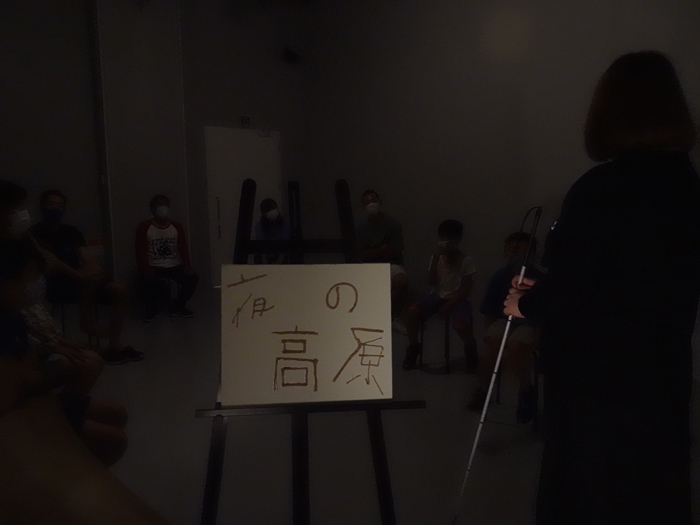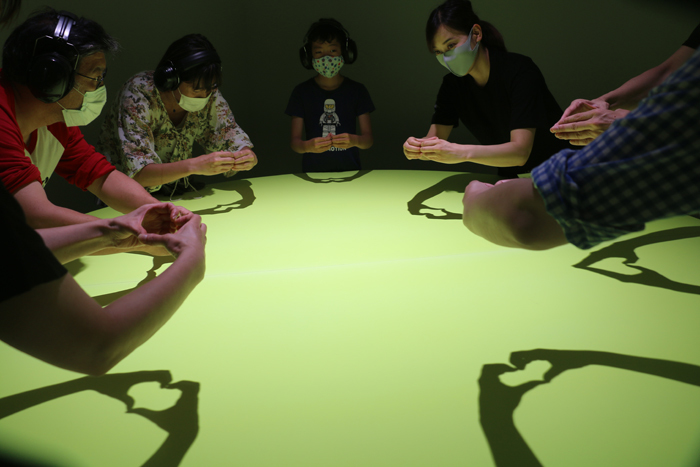A space where you can't see or hear
At the end of August, something wonderful happened. The Dialogue Museum "Forest of Dialogue®," a project I'd been involved with for three years, opened at Waters Takeshiba in Tokyo.
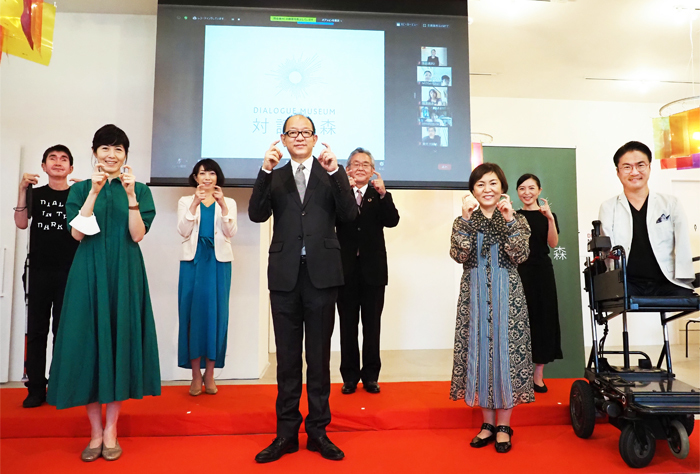
(C)Natsuki Yasuda / Dialogue for People
What kind of museum is it?
What is exhibited here is not paintings or photographs, but "dialogue." Without relying on sight or sound, you can experience diversity while enjoying conversation with others in an extraordinary space where you "can't see" or "can't hear."
Some of you may be familiar with "Dialogue in the Dark." It is a social entertainment experience that literally allows you to "dialogue in the dark." Participants enter complete darkness in groups, guided by visually impaired attendants who are experts in darkness, making surprising discoveries along the way. Having arrived in Japan 21 years ago, approximately 230,000 people have experienced it to date.
Currently, two experiences are available at the museum. One is "Dialogue in the Light," a limited-time arrangement featuring light in the darkness, designed with social distancing in mind.
The other is "Dialogue in Silence," an entertainment experience where you can enjoy dialogue beyond language barriers in a world without sound. This experience can also be enjoyed in a new style while wearing masks.
Perhaps what matters most right now is "dialogue."
What makes me happy about the opening is that the belief of "Dialogue no Mori®️" is spreading throughout the world. As a copywriter, I received this sentiment and wrote a statement that includes this passage:
Generations. Disabilities. Cultures. Religions. Ethnicities.
All the things that divide the world,
connecting them through encounters and dialogue,
a museum where you experience diversity.
Beyond the "divisions" we see in tense global news reports, the remote era we now face is itself a form of division, isn't it?
Working apart makes communication difficult, and poor web conference connections make it hard to hear each other, causing mutual frustration. Precisely at times like these, it's important not to rush, but to truly see and listen to the other person. I believe the mindset of careful, attentive "dialogue" is crucial.
What exactly is "dialogue"?
Isn't dialogue precisely about thinking together, without fixing a single definition?
To conceptualize the symbol for "Dialogue Forest®," we broadly solicited thoughts on "dialogue" in early 2020.
What does "dialogue" mean to you?
A warm mutual awakening that transforms the "unknown" into "knowledge." by Shira Sho
A step toward trust. by Kurage
People bringing their cultures together,
and together create a new culture. by Hiyamacchi
Each person's definition of dialogue connects, and this shape, resembling both the sun and a gate of light, was completed.
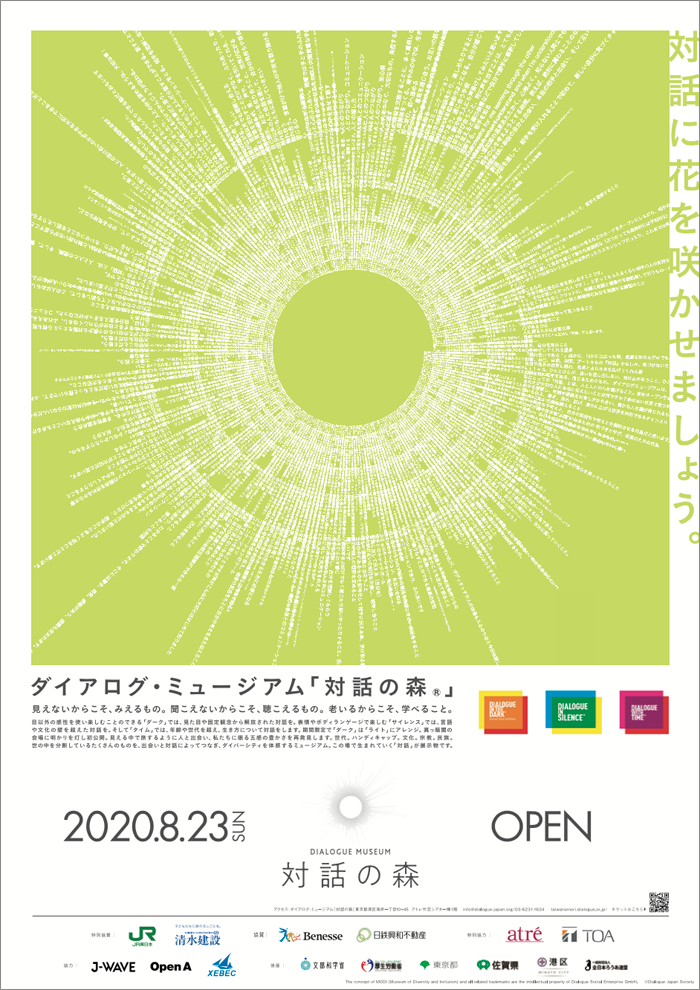
My own definition of dialogue is "imagining the view from the other person's perspective." Learning the following strengthened that conviction even more.
The Reading of "聴す"
I was surprised to learn it can be read as "yurusu" (to forgive). Listening sincerely to another's words is called active listening. The act of listening is accepting the other person's very existence. That's why it's "yurusu."
A dialogue where we hold mutual respect, imagine each other, and accept each other's existence. When I realized this is "mutual forgiveness," imagining the future spreading from the "Forest of Dialogue®" brought tears to my eyes. I hope that by gathering many people here, letting dialogue blossom, and becoming a forest that continues to grow, we can create a kinder society.
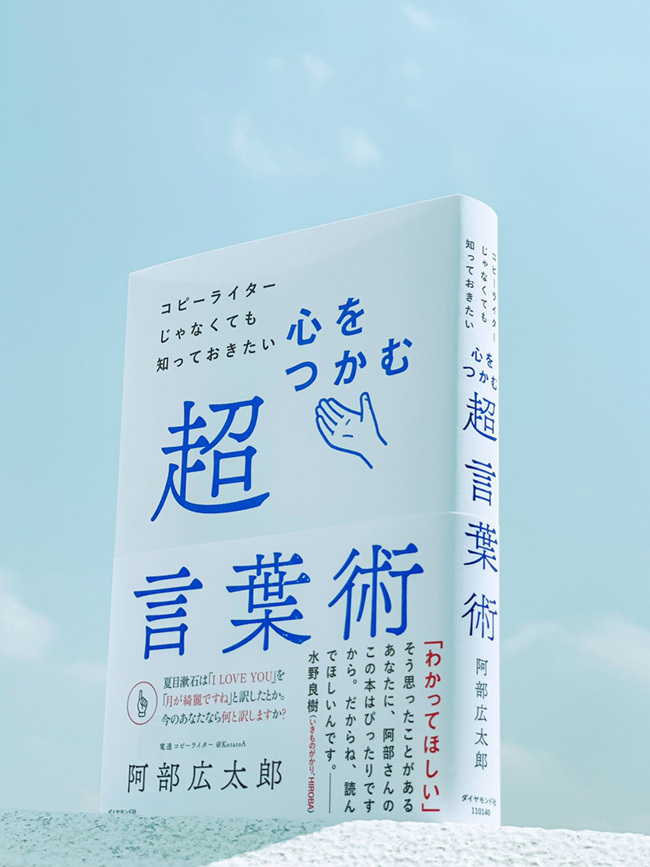
Diamond Inc., 320 pages, ¥1,650 + tax, ISBN 978-4478110140 (Photo/Photography: Nao Noto)
For the story of the first-ever Japanese event of "Dialogue in Silence: Conversation in Stillness," please see my book, 'The Ultimate Words That Capture Hearts: Essential Techniques Even Non-Copywriters Should Know'. It became a crucial experience for me to arrive at the "true nature of words." And for more on the "Dialogue Project" I've been involved with,
please also read this article.
Finally, I'd love to hear from you, the reader of this piece. What does dialogue mean to you? I'd be delighted to hear your thoughts.


